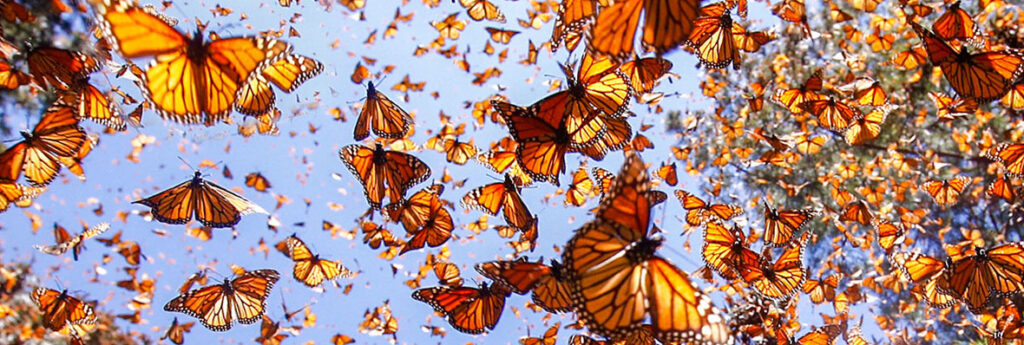Communal farmers and butterfly guides are hoping for a rebound in the number of monarch butterflies – and tourists – at their wintering grounds in central Mexico after a bad year for both last year.
Experts say it is too early to calculate the number of monarchs, which migrate from the Canada and the US and Canada each year to forests west of Mexico’s capital. A formal survey is being carried out this month.
But the butterflies have come to represent an important source of income for the farmers, who own much of the pine and fir forest where the monarchs clump together in trees. Already this year, some of the orange-and-black monarchs have settled into trees for the winter.
After a devastating drop in tourism because of the pandemic last year, and a 26% drop in the number of butterflies, farmer and tourist guide Silvestre de Jesús Cruz, 49, is pinning his hopes on a better outcome for both this season.
“Last year was a little harder, because there were a lot fewer people. But this year is going to be good,” De Jesús Cruz said. “A lot of the communal farm families depend on this,” said the 21-year veteran of guide work, “not just us guides, but also the people down there in the parking lot selling food. A lot of people.”
In the offseason – the butterflies arrive in November and leave around March – De Jesús Cruz plants corn and oats on his small farm parcel.
But those crops don’t provide much cash. Cash income comes from tourism, and because of the coronavirus pandemic, only about 40,000 people visited the dozen or so butterfly wintering grounds on isolated mountain tops last year, down from 80,000 in previous years.
Already, some tourists have shown up this year.
Martha Echeverría, a resident of Mexico City who loves yoga, found the serenity of the El Rosario reserve to be a main draw. Visitors are encouraged to remain silent so as not to disturb the resting butterflies, and that makes for a scene so quiet you can hear the creaking of the fir bows and the sound of the wind.
“I love the silence it brings up in you,” Echeverría said.
De Jesús Cruz explains that guides are taking extra precautions because of the pandemic, like requiring masks and taking visitors’ temperatures before they are allowed in.
That creates some special challenges, given that tourists must hike up several hundred metres of steep trails to get to the ultra-protected areas where the butterflies clump, in area already high in altitude.
Ricardo Rodríguez, a tourist from the state of Puebla, managed to get to the top with no problem despite no getting much regular exercise, but said he’d like a little more space to take off his mask from time to time.
“The face mask, well, it is for everyone’s protection, but on parts of the climb you lack air, and so the hike up could be better planned,” Rodríguez said. “They could space us out a little bit more, so that you could take it off for a while and get more oxygen.”
Due to a myriad of factors, monarch number dropped last year. Experts say drought, severe weather, and loss of habitat – especially of the milkweed where the monarchs lay their eggs – as well as pesticide and herbicide use, and climate change, all pose threats to the species’ migration.
Illegal logging and loss of tree cover due to disease, drought and storms also continues to plague the reserves.
Gloria Tavera, the regional director for the National Council on Protected Areas, said it is too early to tell is this year will mark an increase in the number of butterflies, or tourists.
“It would be risky to say so. We won’t know until… we inspect all the (butterfly) colonies,” said Tavera. As for a return of tourists, she says, “let’s hope so.”

